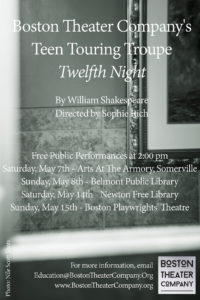Photo: Plymouth Congregational Church on Pleasant Street.
Ron Creamer did not mince words.
In the view of the Pleasant Street resident, what occurs inside the historic Plymouth Congregation Church on Sundays no longer represents the main purpose of the long-time house of worship.
When told by the chair of the Belmont Historic District Commission that for federal oversight review to halt the placement of telecommunication equipment in the Pleasant Street church’s steeple, opponents would need to show how an interior cellular tower would “change the character [of Plymouth Congregation] in a “fairly major” way, Cramer responded by declaring the congregation’s pursuit of thousands of dollars in rental fees from telecommunication giant Verizon Wireless is transforming the church “from a religious institution into a cell phone business.”
“It’s a significant change” of what church was initially built to be, Creamer told the commission, a statement the chair, Lauren Meier, deemed “subjective.”
The rather strident proclamation – reiterated later by another leader of nearly 250 neighbors who currently oppose the plan on aesthetic and health reasons – came at the tail end of Tuesday night’s meeting which saw yet another barrier to Verizon’s plan to place an array of antennas in Plymouth Congregational’s white steeple fall to the wayside.
On Tuesday, Verizon’s attorney Mike Giaimo of Boston’s Robinson & Cole presented the six-member commission a set of new plans – approved by the Planning Board a fortnight before – which no longer required modifications to the exterior of the steeple. Earlier proposals called for removing wooden louvers and creating openings in the steeple.
Since the purview of the Historic District Commission is to investigate and question exterior changes that can be seen from the public way, the commission determined it had no standing to question the revised plans and was left with little to do than simply sign off on the project using either a certificate of appropriateness or one of non-applicability.
Once the project has received the OK from all town bodies, a building permit could then be issued when requested, Glenn Clancy, director of the Office of Community Development, noted earlier this year.
While Verizon was seeking a quick resolution, the commission pondered whether to hold a public meeting in June before issuing the notice, which Giaimo was adamant was unnecessary and that the certificate be issued sooner-than-later.
Glenn Herosian, one of leaders of the opposition and who lives across Pleasant Street from the church, sought answers to the Verizon design changes. Herosian said he was concerned the removal of an air condition unit to cool the equipment could possibly do long-term damage to the structure, which then could affect the overall integrity of the steeple.
But Verizon’s Giaimo would not take the bait, saying he would only speak on the items on the Historic Commission’s agenda, despite Meier’s pleas that it would be “polite” if he or the Verizon representatives would speak on the neighbors’ worries.
In the end, Meier said the committee would work with Community Development on the necessity for a public meeting.
Tuesday was also an opportunity for Verizon to proceed with a Section 106 review mandated in the requires consideration of historic preservation in the multitude of projects with federal involvement, such as the Federal Communications Commission which licenses telecommunication operations.
While usually a fairly standard appraisal – Meier said she had done “hundreds” in her 30-year career – Creamer took the opportunity to fire questions at the employee of EBI Consulting, which manages the Section 106 processes for Verizon, resulting in a rhetorical exercise of competing interpretations of the review.
Creamer soon directed the commission’s attention to the section of the review that specified how a project could be altered that would diminish the integrity of the property, approaching Meier to show a screen on his cell phone asking if she agreed that “change in the character of the property’s use or setting” would trigger federal involvement and a lengthy public process of gathering information and actions.
After contending the church should not be viewed as a structure of worship but of commerce, Creamer noted that the religious component for the church is “only a few hours a week” while the cell tower transmits continuously.
For the opponents of the project, any means of delaying the installation of the equipment is seen as beneficial to their cause as the number of process roadblocks has dwindled to nearly zero.
The neighbors are now pinning their hopes of halting the interior cell tower with a favorable Special Town Meeting. Initiated via a citizen’s petition, the opponents are seeking a change to zoning bylaws to require telecommunication firms to obtain a Special Permit to install an interior cell tower throughout most of Belmont.
The opponents believe forcing an application before the Zoning Board of Appeals – which has been highly suspected of high profile businesses entering Belmont – will effectively add months to the process as the neighbors, according to Herosian, are prepared to present a significant amount of technical and scientific data before the ZBA, challenging existing federal standards on radiofrequency levels.
In addition, Herosian said the neighbors will ask the Belmont Board of Selectmen to hire a technical expert to determine the adverse effects of cellular transmission in a densely populated residential area.
Herosian said since the church initially broached the idea of placing mobile communication equipment in the steeple, the neighbors have been eager to help the church secure funds to allow it to continue its social ministry and discussed partnering the church leaders to approach the town to use Community Reinvestment Committee grants to repair and upgrade the building.
“But they never came back to us with an answer,” Herosian told the Belmontonian after the meeting.
“They’ve turned their backs to their neighbors and our real concerns.”
